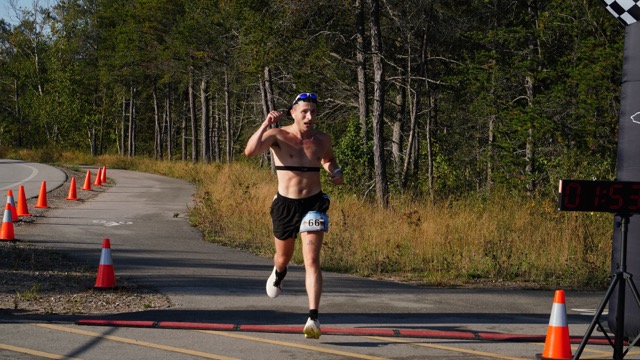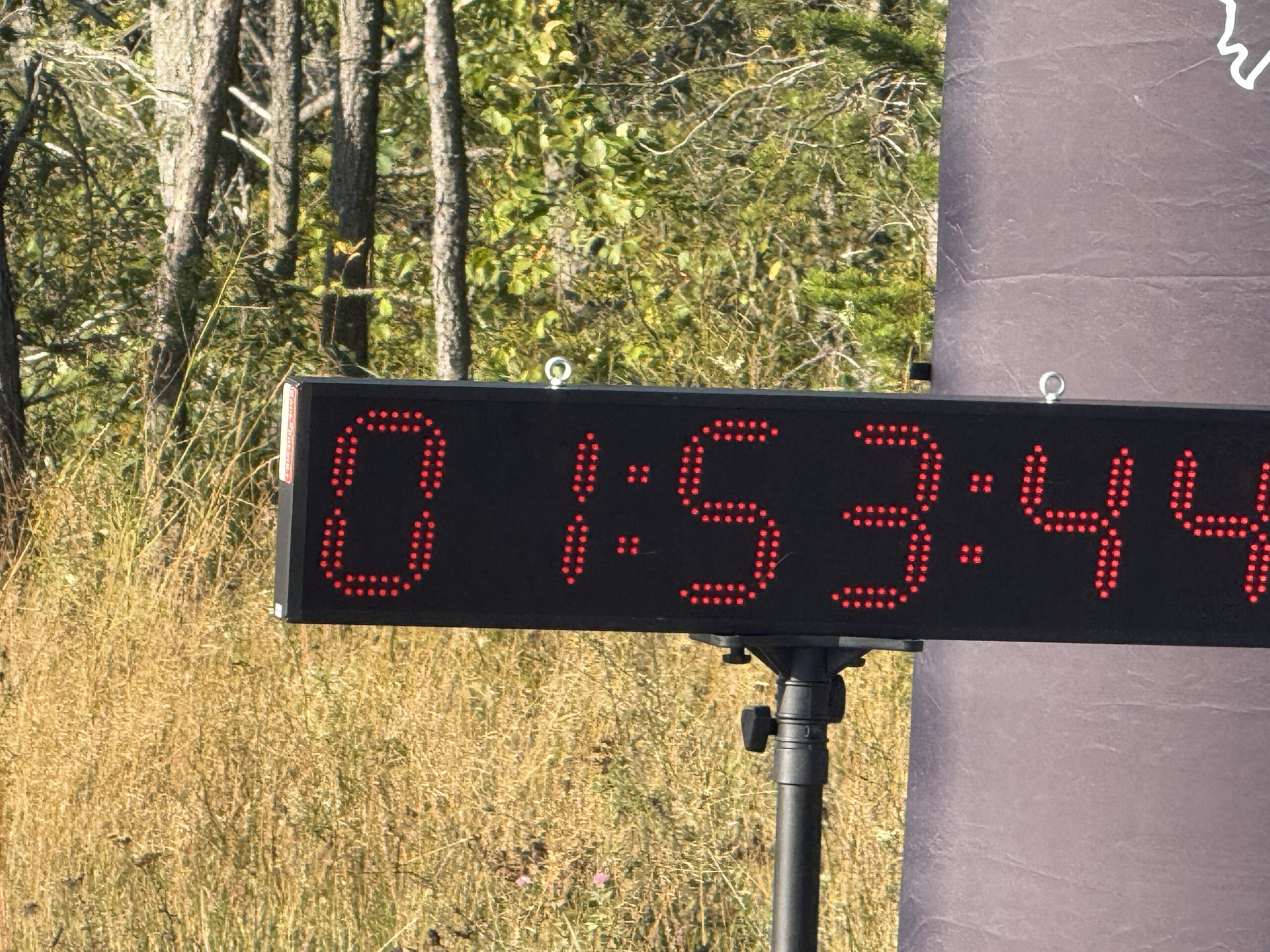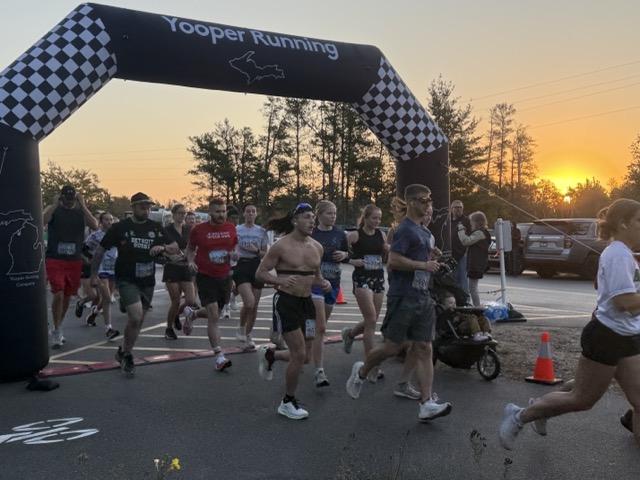Beginner’s Sub-2 Hour Half Marathon Training Plan: Zone 2 First, Speed Second


Where it all started
As a young runner in my first full year, cracking a sub-2-hour half marathon wasn’t something I expected. But once I realized it was possible, I became obsessed with chasing it. After running 1:53:44 in my first race, I’m proof that a sub-2 half marathon isn’t about magic genetics—it’s about structure.
I got under 2:00 by putting most of my miles in zone 2, rotating short/medium/long runs throughout the week, and layering in the occasional speed workout.
There were no gimmicks, no special gear, no magic key—just relentless consistency.
This post breaks down exactly what worked for me: the basic strategies behind my simple weekly schedule.

A Quick Run Down: The Weekly Structure That Worked For Me
I rotated short, medium, and long to keep legs fresh and aerobic volume rising.
- Mon – Gym (Chest and Tri’s)
- Tue – Short Zone-2 Run (3–4 mi / 5–6.5 km) OR Speed Session (see below) (3 mi total)
- Wed – Gym (Back and shoulders)
- Thu – Normal Run 6-8 mile
- Fri – Gym (Leg day)
- Sat – Long Run (8-10 start, Build to 11–12, peak 13-14)
- Sun – Rest Day
Newer runners: hold the long run at a distance where you finish with “one gear left.” If you’re cooked, keep it shorter and build the consistency. This is the key to building a sub 2 hour half marathon.
Why Zone 2 will get you "Sub-2"
A 2-hour half marathon pace averages ~9:09 per mile. Most beginners try to hover near that pace on every run, which leads to fatigue and plateaus. That’s why I focused on my heart rate and let the speed come with time.
I truly believe spending a large chunk of training in Zone 2 was the key to running sub-2 on my first try. Zone 2 is a lower heart-rate zone—often called a “conversational effort.” Countless studies show Zone 2 builds your aerobic foundation and aids your body’s recovery. When most of your training stays in this zone, you’re building durability for the long haul—so when it’s time to pick up the pace, your body can reach much higher limits.
How Do You Find Your Zone 2?
1) The simple formula method (220-age):
Subtract your age from 220 to estimate max heart rate, then take 60–70% of that number for a Zone 2 range.
Example: Zone 2 ≈ (220 − age) × 0.60 to 0.70.
This is quick and straightforward, but it doesn’t account for individual differences (fitness level, genetics, medications, etc.), so accuracy can vary.
2) Use your smartwatch/phone data (what I did):
Your smartwatch likely tracks enough data to estimate zones more accurately than the 220 method. If you use an Apple Watch, it will calculate zones for you based on your recent heart-rate trends. Don’t have an Apple Watch? Many watches sync to Apple Health on an iPhone, which can then generate personalized zones from your heart-rate history. This is the data I used—and trusted—for my Zone 2 training.
Should You Use a Heart Rate Monitor?
I’m not one to say you need gear, but if you plan to train seriously in Zone 2, a heart-rate monitor is essential for accuracy. I use the Polar H10, and I can’t recommend it enough.
Heart-rate monitors are typically more accurate than smartwatches. They’re dedicated devices designed solely to read heart rate, usually worn around your chest for the best signal. Most will sync directly to your watch or phone so you can see your heart rate live while you run.
The Speed Session | Where Breaking Sub 2 Is Found
In my journey so far, I kept speed simple and safe:
- 3 miles total:
-
Mile 1: slow paced warm-up jog (10 min mile for me)
-
Mile 2: as fast as controlled (strong effort/Under 7:30 mins for me)
-
Mile 3: cool down jog (between 9:30-10:30 min for me)
-
This builds running economy, leg turnover, and confidence without crushing recovery. Your speed sessions layer on top of the Zone 2 foundation: they’re key to improving mile times because they teach you how those faster paces feel. That familiarity builds the confidence to push to higher levels when it counts.
You may be wondering, is one speed workout enough? Yes. Quality over quantity is key. A common trap for runners is feeling like you must push to the max all the time—but that’s the fastest way to get injured. One focused session per week is plenty when the rest of your training is strong in Zone 2.
Bringing it all together | Your "Normal" Runs
On Thursdays and Saturdays, I do what I call “normal” runs. These runs blend my Zone 2 and speed work. I don’t fixate on heart rate mile by mile, and I’m not chasing the fastest pace. Instead, I aim for a comfortably faster pace I can hold over longer distances. This is where you really learn to apply the endurance and speed you’ve been building.
Basic Pacing Strategy I Used For a Sub 2:00 Half Marathon
Honestly, the week before my race I still didn’t know exactly what my strategy would be—just that I wanted to break two hours. In those final days, I noticed how much faster I could run while staying in Zone 2. On my last long run before race day, I decided to do the full 13 miles in Zone 2. The result? I ran a 2:05 that night. I couldn’t believe it. It felt like the culmination of months of consistently building on the weekly plan I’ve laid out in this article.
So come race day, I decided that I was going to run the first half of the race at the top end of my zone 2, then kick it down on the back half, putting myself in zone 3-4. The final result? A 1:53:44 finishing time, and the least amount of fatigue I have ever felt after running a half marathon distance.

Final Recommendation
Big picture: Times do not matter, you working to make yourself better does!
Never compare yourself and your progress to somebody else’s. Everybody is going to make progress at different paces, everybody is going to face different challenges and struggles, the only thing you can do is run YOUR race. Do not let others progress discourage you, and in turn, do not let your progess discourage others!
Lift each other up and keep moving!
